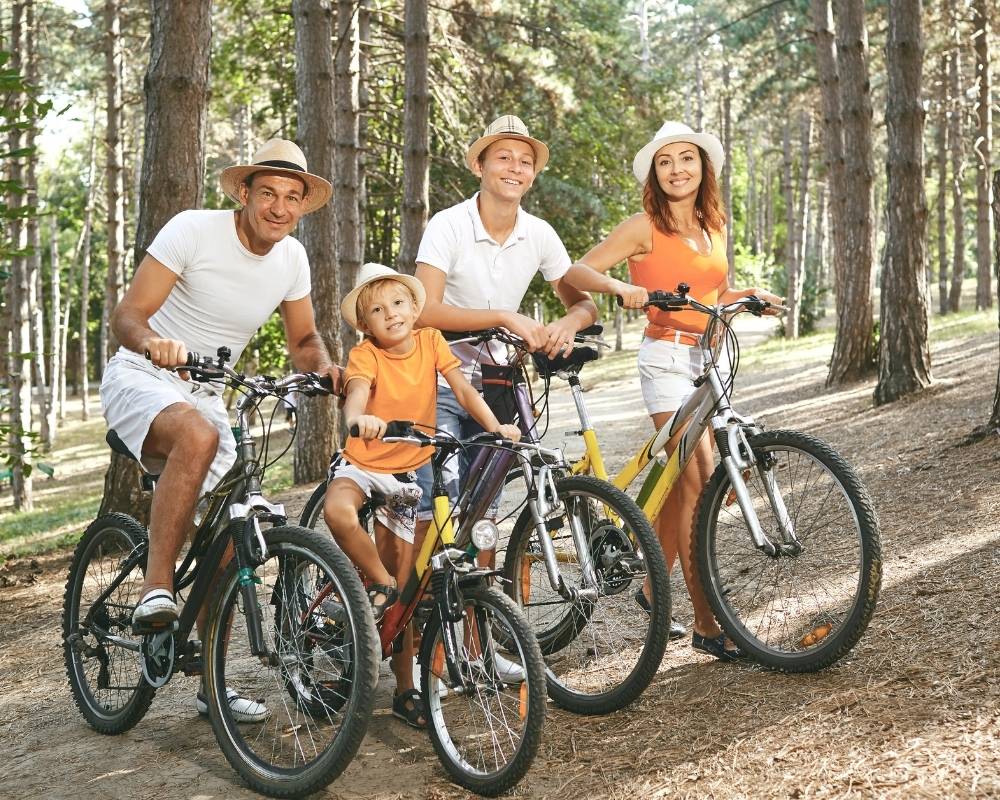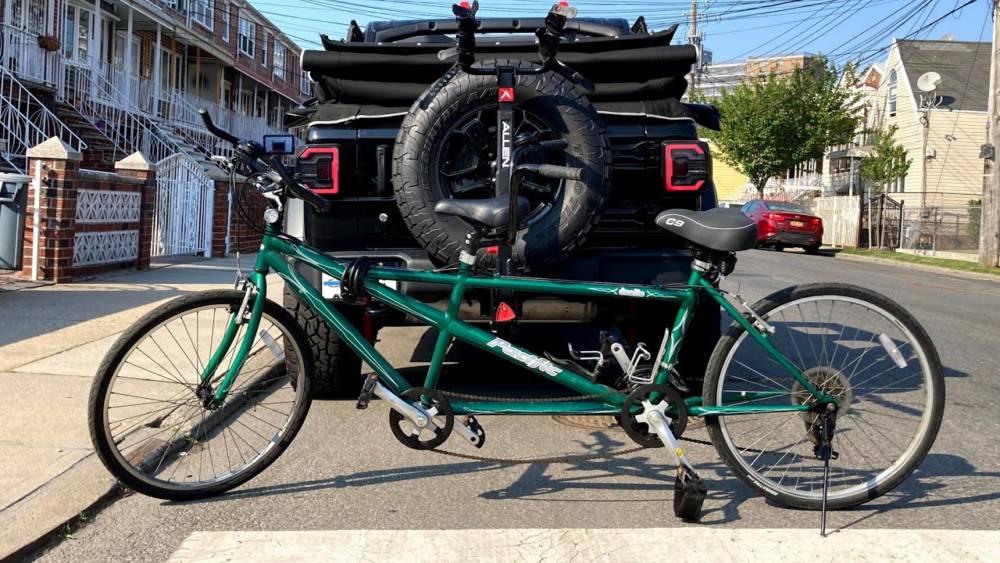When it comes to transporting bikes, automobile bike racks are a lifesaver. But are they safe to use? If you often use bike racks, this may be a factor to consider. Additionally, if you own a high-end vehicle, you’ll want to maintain it in top shape.
If you utilize a bike rack incorrectly, you might end up damaging your vehicle.
Some kinds of bike carriers have a higher likelihood of causing damages than others, and this article examines the possible damage that may be induced by each kind of bike rack as well as how to avoid it.
How to Keep Your Car Safe from a Bike Rack
Numerous methods exist for preventing the bike rack from damaging a vehicle. Following these guidelines might save you a lot of money in the long run.
1. Make Sure Your Bike Rack Is Installed Correctly
Installing a bike properly is one of the greatest ways to prevent it from harming your vehicle.
You must carefully read and adhere to all installation and use instructions. Make sure you read the directions that come with the bike rack thoroughly before installing it.
Make an appointment at a bike shop if you’re experiencing issues with your rack or aren’t sure whether it’s correctly placed.
2. Verify That Everything Is Safe and Sound
Make sure the bike rack is safe and sturdy before you leave the house. The motorcycles were also affected by this.
The rack should be checked many times to ensure that the bikes don’t come off, causing damage to the bikes and maybe the vehicle.
To make sure your bike rack is safe and secure, inspect the straps, rack, and any other elements that are attached to it. If you often use your bike rack, you may even construct a checklist to ensure that all of the components are properly linked.
3. Pay Attention to Your Bike Rack
Those who only use bike racks on a regular basis should pay attention. No matter where you mount your bike rack, it alters your vehicle’s overall shape.. and height.. and width…
For vehicles with rear-mounted bike racks, you should provide for more maneuvering space in the back while reversing. Make a mental note of the distance between the rear of your automobile and the bike rack. Keeping a mental note that you also have a bike carrier on the back can help prevent you from driving into anything else by accident.
Having a bike rack on the top of your car requires you to know the vehicle’s clearance. In a garage or drive-thru, your motorcycles might get caught if you’re not cautious.
Most low bridges and drive-thrus have clearance signs, so you can easily avoid them if you know your car’s clearance with the bikes connected.
Keep an eye out for anything that could get in the way of your bike rack and make sure you’re not going to strike the bikes by stopping the vehicle or pulling over if you’re driving on a public road. Taking a risk is never a good idea!
4. Make Sure You Clean the Contact Points Between the Trunk & The Bike Rack Often
It’s important to keep the foam pads on your trunk-mount bike rack clean if you’ve fitted it properly. There is also a layer of paint laying on top of this layer.
Foam may act as a sandpaper, scratching the paint if debris is trapped underneath it. Cleaning these contact points regularly helps prevent damage.
5. Protect your paintwork using Painter’s Tape or PPF.
Consider using paint protection film if the bike rack is grinding against a specific area of your automobile. With a trunk-mounted bike rack, this is likely to happen.
You may avoid paint damage and scratching by placing a piece of painter’s tape or a film of paint protection over the rack’s contact points with the vehicle bodywork.
6. Choosing The Correct Bike Rack
In addition to protecting your vehicle, a well-fitting bike rack may also save you money in the long run.
If you plan to use your car’s trunk-mounted bike rack regularly, stay away from it. This style of bike rack might damage your paint and wear down your finish over time. Make sure the foam cushions are big enough to distribute the weight evenly over a vast area. It’s an excellent idea to have a trunk-mounted bike if you’re only going to use it sometimes.
Recommended: The Best Bike Racks for Your Car’s Trunk
Parking in a garage very often necessitates that you forego the use of a roof-mounted bike rack. Parking your automobile in a garage usually necessitates removing your bicycle first. Non-stop usage of your bike rack may be a headache, and if you neglect to remove the bikes, it can do significant damage to your vehicle, bikes, and garage if you don’t take the time to remove them.
If you’re parking in a city, don’t use a hitch-mounted bike rack. If you have a hitch-mounted bike rack, your vehicle will be longer, making it harder to gauge distances while reversing. Because of this, you’ll be more likely to strike parked automobiles and end up with damaged vehicles.
Your bike rack should be able to support the weight of your bikes without collapsing. The maximum weight that your bike rack can hold may be found in the product specs. Use caution while utilizing a hitch-mounted bike rack. Make sure your hitch can handle the weight of your rack and your bikes.
Typical Types Of Bike Racks That Cause Damage
Car damage may happen with any bike rack, but some are more prone to it than others.
1. Trunk Bike Racks
In terms of automotive damage, trunk-mounted bike racks are the most dangerous. Bike racks like this one rest on the car’s paint and are attached to the trunk’s borders.
Because this sort of rack is constantly in touch with your vehicle, it may produce scratches by rubbing against it.
Foam cushions are often used to cushion the car’s roof when a bike rack is fitted to the trunk. Using these foam pads on a bike rack that isn’t securely mounted might cause damage to the paint over time.
Using the foam pads on an unclean surface might do more harm to your automobile than using them in conjunction with a clean surface.
As a result, the straps that are fastened to the vehicle might cause damage to the paintwork. The likelihood of this occurring is higher if the straps are not completely fastened or if there is extra strap flapping about in the wind.
If the bikes aren’t properly secured, even a trunk-mounted bike rack might cause damage to your vehicle. If your bike’s front wheel moves while you’re driving, it might easily scratch the paint. Scratches and faded paint will inevitably occur as a consequence of this.
A trunk-mounted bike rack should also be installed with care to prevent scratching or denting the vehicle. During installation, a hook might create a significant mark if it’s dragged over the paint surface.
2. Hitch Mounted Racks
Although hitch bike racks are far more secure than trunk-mounted racks, they also have a few drawbacks.
In spite of the fact that the bike is not in direct touch with the vehicle, it is still possible for the bike to strike the vehicle. Car damage might result from bicycles that are swaying and wheels that are turning into an object that strikes the vehicle.
Reversing and driving should also be done with prudence. There are a number of things that may go wrong with a hitch-mounted bike rack connected to your vehicle if you accidently hit anything while in reverse with the rack attached.
Roof Bike Racks
Similar to hitch-mounted bike racks, roof-mounted racks offer certain unique concerns.
Your car’s roof, rather than being exposed in the back, might be damaged. You must know how high your automobile can go with the bikes connected if you don’t. Bikes may be torn from the rack or slammed against your vehicle if you fail to pass over a low bridge, drive-through, or garage..etc..
This may quickly damage your vehicle, which can be costly to fix.. The back glass may potentially be smashed if the bikes come into contact with anything hard.
Final Thoughts
Bike racks, when used properly, are a great way to transport your bikes. However, they can cause damage to your vehicle if not used correctly.
Most car damage from bike racks is minor and can be easily fixed. However, it is important to take precautions to avoid any potential damage. Make sure your bike rack is the correct size and type for your vehicle. Secure the rack correctly, and make sure the bikes are properly secured to the rack. Avoid any low bridges or obstacles, and drive carefully. By following these simple tips, you can help avoid any damage to your vehicle.






